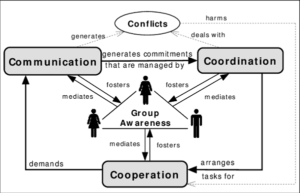Baby sitting- Babysitting is the act of taking care of and supervising children, typically on a temporary basis, while their parents or guardians are not available. This service is often provided by teenagers or adults, either as a casual job or as a professional childcare service. Here are some key points to consider when it comes to babysitting:
- Responsibilities: Babysitters are responsible for the well-being and safety of the children in their care. This includes feeding, changing diapers (if applicable), playing with the children, ensuring their safety, and putting them to bed at the designated bedtime.
- Qualifications: While formal qualifications are not always required, it’s essential for babysitters to have some knowledge of child development and safety. CPR and basic first aid training can be beneficial.
- Experience: Many parents prefer babysitters who have experience with children of the same age as their own. Previous babysitting experience can be a valuable asset.
- References: It’s common for parents to ask for references from previous babysitting jobs to ensure the babysitter’s reliability and trustworthiness.
- Pay: Babysitting rates vary depending on factors such as location, the number of children being cared for, and the specific responsibilities involved. Rates can be hourly or a flat fee for the entire duration.
- Safety: Babysitters should be aware of safety guidelines, including emergency contact information, house rules, and childproofing measures.
- Communication: Good communication with parents is essential. Be sure to inform parents about any issues or concerns that arise during your babysitting session.
- Legal Considerations: In some places, there may be legal requirements or regulations related to babysitting. These can include age restrictions for babysitters or specific qualifications.
- Finding Babysitting Jobs: Babysitting opportunities can be found through personal connections, online platforms, or by advertising your services locally. Websites and apps specifically designed for connecting babysitters with parents are also common.
- Building a Reputation: Building a good reputation as a reliable and responsible babysitter can lead to repeat business and positive referrals.
Remember that babysitting requires a high level of responsibility, as you are caring for someone else’s child. It’s essential to prioritize the safety and well-being of the children in your care and maintain open communication with parents or guardians.
What is Baby sitting
Babysitting is the act of caring for and supervising children, usually on a temporary or part-time basis, while their parents or guardians are not present. The primary responsibilities of a babysitter typically include ensuring the safety and well-being of the children, attending to their basic needs, and providing appropriate entertainment or activities.
Here are some common tasks and responsibilities associated with babysitting:
- Child Supervision: Babysitters are responsible for watching over the children to ensure their safety. This includes preventing accidents and injuries.
- Feeding: Depending on the child’s age and the duration of the babysitting session, you may be responsible for feeding them, which can include preparing meals or snacks.
- Diaper Changes: For infants and toddlers, babysitters may need to change diapers as necessary.
- Play and Entertainment: Keeping children engaged and entertained through games, activities, or age-appropriate play is a significant part of babysitting.
- Bedtime Routine: Babysitters often handle the bedtime routine, which can involve bathing, reading stories, and putting the children to bed.
- Basic First Aid: Babysitters should be prepared to provide basic first aid in case of minor accidents or injuries.
- Emergency Procedures: It’s essential for babysitters to know the emergency contact information, any specific medical or dietary needs of the children, and how to respond in case of more serious emergencies.
- House Rules: Following the parents’ or guardians’ guidelines and house rules is important. This includes adhering to schedules, enforcing discipline as instructed, and respecting any specific household preferences.
Babysitters may be hired for a few hours, an evening, or even for an entire day, depending on the parents’ needs. They are typically paid for their services, with the rate varying depending on factors like location, the number of children being cared for, and the babysitter’s level of experience.
Babysitters can be teenagers looking for part-time work, adults who offer babysitting services professionally, or individuals providing occasional childcare for family and friends. The primary focus is always on ensuring the safety, well-being, and happiness of the children in their care.
Who is Required Baby sitting
Babysitting is typically required when parents or guardians are temporarily unavailable and need someone to care for their children during that time. There are various situations in which babysitting may be necessary or beneficial. Here are some common scenarios when babysitting might be required:
- Parents’ Work Commitments: Many working parents require babysitting services during their working hours, especially if they have young children who are not yet in school full-time.
- Date Nights: Parents often hire babysitters for date nights or evenings out when they want to spend quality time together without their children.
- Appointments and Errands: Parents may need a babysitter when they have appointments, errands, or other commitments that their children cannot attend.
- Special Events: Babysitters are frequently hired for special events like weddings, parties, or gatherings, where parents want their children to be supervised by someone experienced.
- Emergency Situations: Babysitters can be called upon in case of family emergencies or unexpected situations when parents need immediate assistance with childcare.
- Illness or Recovery: When a parent or child is ill or recovering from an illness or surgery, additional help may be required to care for the children.
- School Holidays or Breaks: During school holidays or summer breaks, parents who work may need a babysitter to watch over their children.
- Occasional Help: Sometimes parents may simply want an occasional break or assistance with their children to reduce stress and fatigue.
It’s important to note that the need for babysitting can vary widely depending on the family’s circumstances and the ages of the children. In some cases, parents may rely on family members, friends, or professional babysitters to fulfill these caregiving responsibilities.
The specific requirements for babysitting, such as the duration and frequency, will depend on the parents’ needs and the availability of suitable caregivers. When hiring a babysitter, parents should consider factors like the babysitter’s qualifications, experience, and references to ensure the well-being and safety of their children while they are away.
When is Required Baby sitting

Babysitting is typically required in various situations when parents or guardians need someone to care for their children during their absence. The need for babysitting can arise in a wide range of circumstances. Here are some common scenarios when babysitting might be required:
- Parents’ Work Commitments: Babysitters are often needed when parents have work commitments and need someone to look after their children during working hours. This includes situations when children are not yet in school full-time or when their parents work irregular hours.
- Date Nights: Parents frequently hire babysitters for date nights or evenings out when they want to enjoy some adult time alone without their children.
- Appointments and Errands: Parents may require a babysitter when they have appointments, errands, or other commitments that their children cannot attend, such as doctor’s appointments, grocery shopping, or meetings.
- Special Events: Babysitters are commonly hired for special events like weddings, parties, or social gatherings where parents want their children to be supervised by a responsible caregiver.
- Emergency Situations: Babysitters may be called upon in cases of family emergencies or unexpected situations when parents need immediate assistance with childcare.
- Illness or Recovery: Babysitters can be essential when a parent or child is ill or recovering from an illness or surgery, and additional help is needed to care for the children.
- School Holidays or Breaks: During school holidays or summer breaks, working parents may need a babysitter to look after their children while they are out of school.
- Occasional Help: Sometimes parents may simply want an occasional break or assistance with their children to reduce stress and fatigue.
The need for babysitting can vary based on the family’s circumstances, the ages of the children, and the availability of other caregivers or family members. It’s important for parents to plan for these situations by considering factors such as the babysitter’s qualifications, experience, and references to ensure the well-being and safety of their children while they are away. The specific timing and frequency of babysitting will depend on the parents’ individual needs and schedules.
Where is Required Baby sitting
The need for babysitting can arise in various locations, depending on the specific circumstances and the activities that parents or guardians are engaging in. Here are some common locations where babysitting may be required:
- At Home: Babysitting is often needed in the family’s own home. This is one of the most common scenarios, where a babysitter comes to the family’s residence to care for the children. Parents might need babysitters while they work, for date nights, or when they have other commitments within the home.
- Relative’s or Friend’s Home: In some cases, parents may arrange for a babysitter to care for their children at a relative’s or friend’s home. This can be a convenient option if the family is visiting or attending an event at the relative or friend’s place.
- Special Events: Babysitters are often required at special events or venues, such as weddings, parties, or conferences. These events may have designated childcare areas where babysitters watch over children while their parents participate in the event.
- Childcare Centers: While not traditional babysitting, parents who work may enroll their children in daycare or childcare centers. These centers provide structured care and early childhood education.
- Hotels or Resorts: When families go on vacation or stay at hotels or resorts, they may require babysitting services for a few hours or for the evening. Many hotels offer in-house babysitting services or can help arrange for a local babysitter.
- School or Preschool: Parents with young children attending school or preschool may need occasional babysitting services during school breaks, teacher workdays, or other non-school days.
- Medical Facilities: In the case of a medical appointment or a hospital stay, parents may need a babysitter to look after their child in a hospital or healthcare facility, if children are not allowed to accompany their parents during these appointments.
The specific location for babysitting will depend on the parents’ needs, the type of activity they are engaged in, and the availability of babysitters or childcare services in that area. Babysitting can occur in various settings, but the focus is always on ensuring the safety and well-being of the children while their parents or guardians are temporarily unavailable.
How is Required Baby sitting
The process of arranging for babysitting, or how babysitting is required, involves several steps to ensure that the caregiver and children have a safe and positive experience. Here’s how the process typically works:
- Identify the Need: Parents or guardians identify when they require babysitting services. This could be for various reasons, as mentioned in previous responses, such as work commitments, date nights, appointments, or special events.
- Determine the Specifics: Parents should determine the date, time, duration, and location where babysitting is needed. This information helps when contacting potential babysitters.
- Find a Babysitter:
- Personal Network: Parents may have friends, family members, or acquaintances who are willing and capable of babysitting. Personal connections can be a good starting point.
- Online Platforms: Many websites and apps exist for connecting parents with available babysitters. These platforms often provide profiles, reviews, and ratings of potential caregivers.
- Babysitting Agencies: Some cities have babysitting agencies or services that match parents with suitable babysitters. These agencies may conduct background checks and screening of their caregivers.
- Interview and Screening: It’s crucial to interview potential babysitters to discuss their qualifications, experience, and availability. Parents may also want to check references and perform background checks to ensure the babysitter’s reliability and trustworthiness.
- Discuss Expectations: During the interview or hiring process, parents should clearly communicate their expectations, including responsibilities, routines, rules, and rates of pay. It’s important to ensure that the babysitter is comfortable with these expectations.
- Agree on Terms: Once both parties are satisfied with the arrangements, an agreement should be reached on the terms of the babysitting service, including the date, time, location, duration, compensation, and any other specific details.
- Prepare the Children: Parents should inform their children about the babysitter who will be caring for them and explain the expectations and routines.
- Safety Measures: Ensure that the babysitter has access to emergency contact information, knows the location of first-aid supplies, and is familiar with any safety procedures or medical needs of the children.
- Stay in Touch: During the babysitting session, parents can periodically check in with the babysitter, especially if it’s their first time working together. Communication between the parents and the babysitter is essential.
- Payment: After the babysitting service is complete, parents should promptly pay the babysitter according to the agreed-upon rate.
By following these steps, parents can ensure that the babysitting experience is well-organized and safe for both the caregiver and the children. Effective communication and careful selection of a babysitter are essential for a successful babysitting arrangement.
Case Study on Baby sitting
The Smith Family’s Date Night
Background: The Smiths are a young couple with two children, Emma (age 4) and Liam (age 7). They both work full-time and occasionally need a babysitter for date nights. Their regular babysitter, Sarah, is unavailable for this particular Saturday evening.
Scenario: The Smiths decide to hire a new babysitter, Emily, whom they found through an online babysitting platform. This is the first time they are using Emily’s services.
Process:
- Identification of Need:
- The Smiths realize they haven’t had a date night in months and decide they’d like to go out for dinner and a movie.
- Finding a Babysitter:
- They create a profile on a popular babysitting platform and find Emily, a college student with positive reviews and experience with children.
- Interview and Screening:
- The Smiths conduct a video interview with Emily to discuss her experience, qualifications, and availability.
- Emily provides references, and the Smiths contact them to verify her reliability.
- Discuss Expectations:
- During the interview, the Smiths discuss their expectations with Emily, including their children’s bedtime routine, emergency contact information, and any specific house rules.
- They agree on the rate of pay, which is $12 per hour for the evening.
- Agree on Terms:
- The Smiths and Emily agree to a babysitting session on Saturday from 6:00 PM to 11:00 PM at their home.
- Prepare the Children:
- On the day of the babysitting, the Smiths talk to Emma and Liam about Emily, explaining that she will be taking care of them while they are out. They reassure the children and leave her contact information in case of any issues.
- Safety Measures:
- The Smiths provide Emily with a list of emergency contacts, including their phone numbers, a neighbor’s contact, and the number of a nearby urgent care facility.
- They also show Emily where the first-aid kit and fire extinguisher are located.
- Stay in Touch:
- Throughout the evening, the Smiths periodically send a text message to check in on how things are going and to confirm that the children are doing well.
- Payment:
- When the Smiths return home, they pay Emily $60 for the five-hour babysitting session and express their gratitude for her services.
Outcome: The babysitting session goes smoothly, and the children enjoy their time with Emily. The Smiths are pleased with Emily’s services and agree to hire her for future babysitting needs. They also leave her a positive review on the babysitting platform to help her build her reputation.
This case study demonstrates the process of identifying the need for babysitting, finding and screening a babysitter, discussing expectations, ensuring safety measures, and the importance of open communication between the parents and the babysitter. It also highlights the importance of building trust and rapport with a new babysitter for a successful babysitting experience.
White paper on Baby sitting
Creating a comprehensive white paper on babysitting involves providing a detailed overview of the subject, including its history, industry trends, challenges, best practices, and other relevant information. Below is an outline for a white paper on babysitting:
Title: The Evolving Landscape of Babysitting: Trends, Challenges, and Best Practices
Abstract:
- A brief summary of the white paper’s content.
- The importance of understanding the dynamics of the babysitting industry.
Table of Contents:
- Introduction
- The significance of babysitting
- Purpose of the white paper
- Scope and limitations
- Historical Perspective
- The historical context of babysitting
- How babysitting has evolved over the years
- Babysitting Today
- Current state of the babysitting industry
- Market trends and demands
- The impact of technology and online platforms
- Types of Babysitters
- Classification of babysitters (e.g., casual babysitters, professional nannies, au pairs)
- Qualifications and skills required
- Hiring a Babysitter
- Finding the right babysitter
- The interview and screening process
- Background checks and references
- Babysitting Best Practices
- Responsibilities of a babysitter
- Creating a safe and engaging environment
- Handling emergencies and first aid
- Communication with parents and children
- Safety and Security
- Childproofing and safety measures
- Emergency procedures
- Legal considerations in babysitting
- Challenges in Babysitting
- Common challenges faced by babysitters
- How to handle challenging situations
- Babysitting Rates and Payment
- Factors affecting babysitting rates
- Payment methods and practices
- The Future of Babysitting
- Emerging trends and changes in the babysitting industry
- The role of technology in the future of babysitting
- Conclusion
- The importance of babysitting as a valuable service
- The need for continual education and professionalization in the industry
- References
- Cite sources and references used in the white paper
Appendices:
- Sample babysitting agreements and contracts
- Emergency contact forms
- Checklists for parents and babysitters
- Safety tips for babysitters
This white paper aims to provide a comprehensive view of the babysitting industry, including its history, current state, best practices, and future trends. It addresses the needs of parents, babysitters, and anyone interested in understanding the evolving landscape of babysitting as a valuable childcare service.





